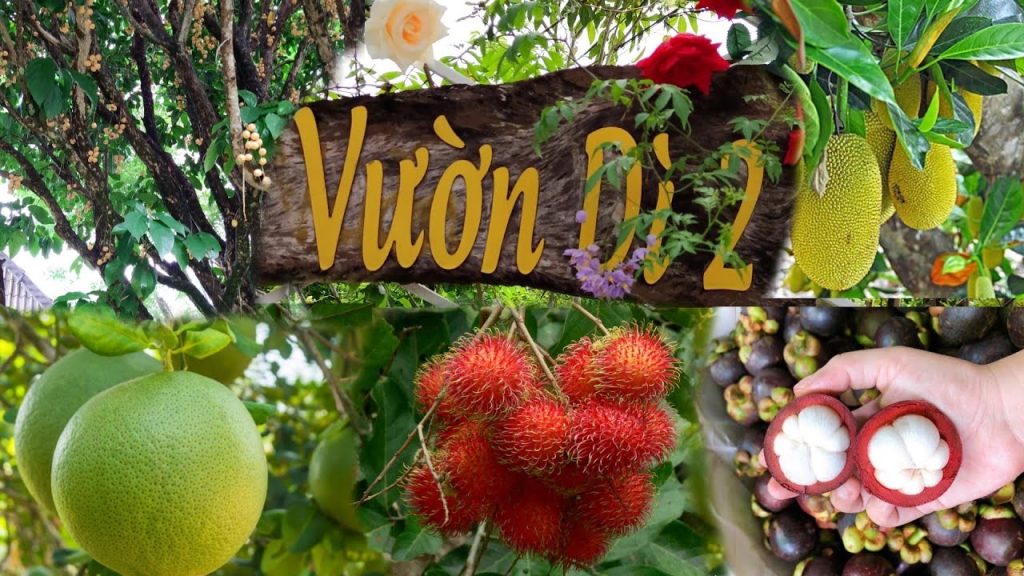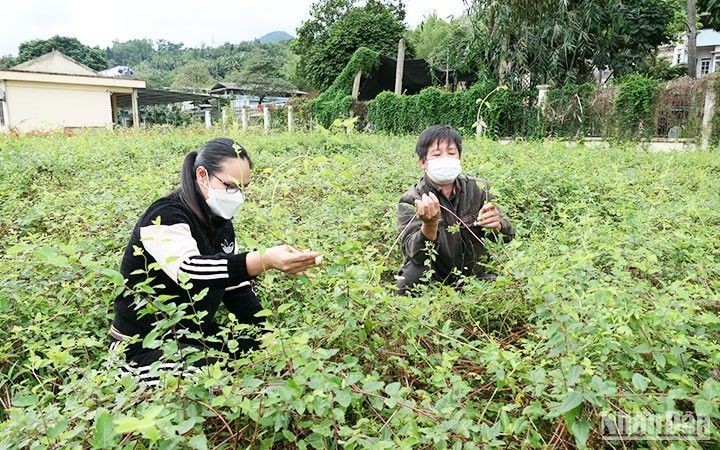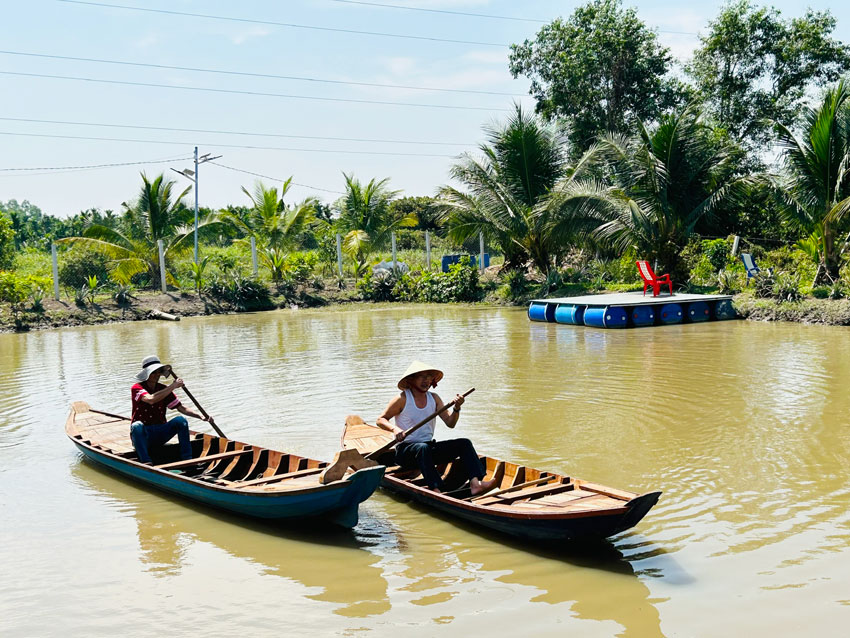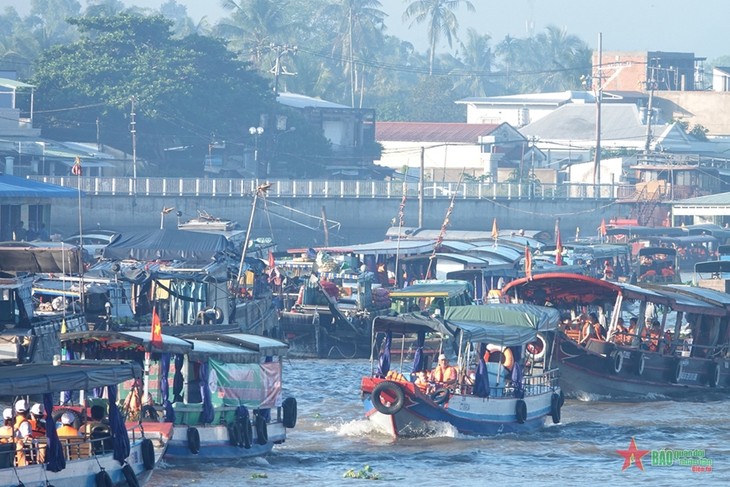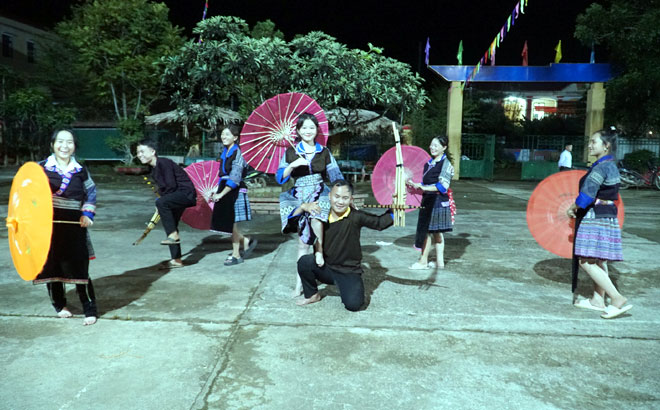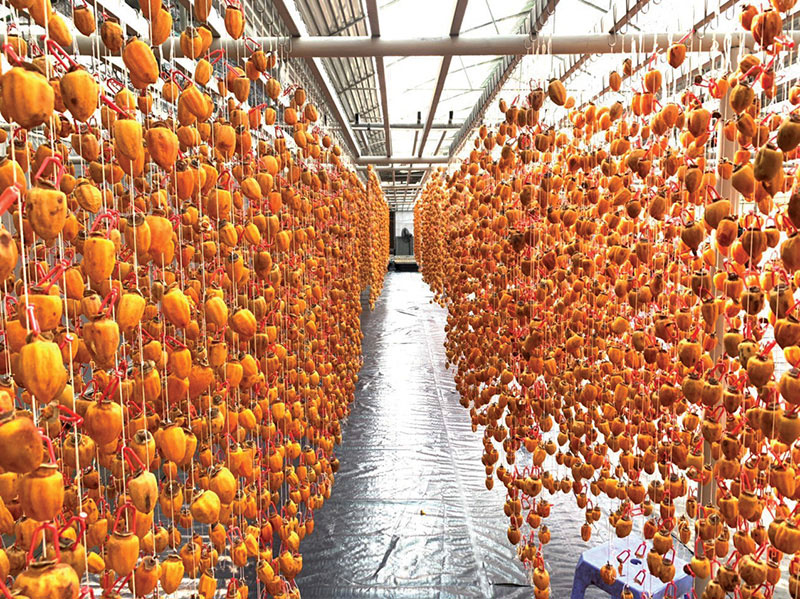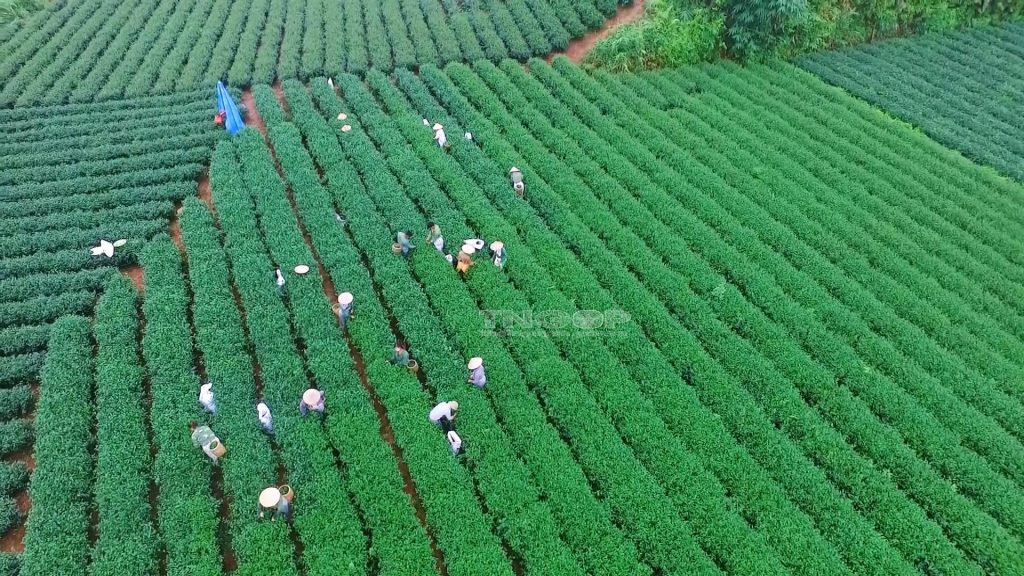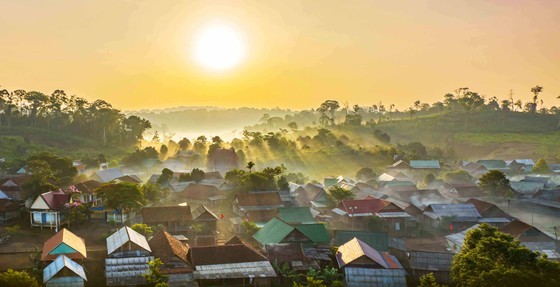(TITC) – Amid the bustling urban rhythm of Ho Chi Minh City (Mergered), surrounding rural communes such as Dat Do, Phuoc Hai, Hoa Hiep, and Binh Chau are quietly charting a new direction. By combining traditional agriculture with eco-tourism development, local farmers are transforming longan orchards into vibrant destinations. These initiatives not only improve household incomes but also enrich the landscape of community-based tourism – green, clean, and rooted in authentic rural culture.
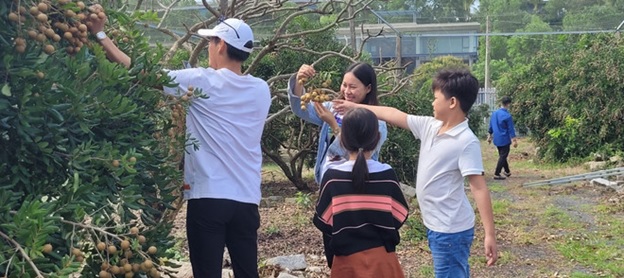
Visitors tour and experience harvesting longans in the orchard
A fruitful harvest, a new opportunity
This year’s longan harvest has been particularly abundant, thanks to favorable weather and improved farming techniques. In Hoa Hiep, farmer Nguyen Cong Ky harvested about 15 tons of xuồng cơm vàng longans from his 1.5-hectare orchard, a 50% increase over last year. In Binh Chau, the Do Yen family expects 40 tons from four hectares, while in Phuoc Hai, veteran grower Pham Tham anticipates as much as 60 tons from his decades-old orchard, compared to only 18 tons last year.
Although market prices for longan have fallen, many farmers are no longer solely dependent on traders. Instead, they have adapted by integrating farming with tourism, inviting visitors to experience life in the orchards. This model creates added value, stabilizes demand, and opens new opportunities for local produce.
Green havens close to the city
Just a few hours’ drive from the city center, visitors can easily find themselves immersed in the cool greenery of suburban longan orchards. In Binh Chau, Phuoc Hai, or Hoa Hiep, tourists can stroll through shady groves, pick fresh fruit, taste longans right under the trees, and experience the rhythms of rural life.
In Phuoc Hai, Mr. Tham’s orchard welcomes 30–40 guests every weekend. Meanwhile, Hoa Thuan Orchard on the Vung Tau – Binh Chau coastal road, run by Ms. Truong Thi Bay, has grown into a popular community-based tourism site since 2022, attracting both domestic and international visitors. Here, guests can learn about clean farming practices, purchase fresh produce, and enjoy a countryside retreat.
Through these experiences, the longan has become more than just an agricultural product – it now serves as a “green ambassador,” promoting suburban agriculture while preserving rural traditions.
Enhancing value through quality and certification
To raise the profile of longan, local agricultural agencies have supported farmers with training in organic cultivation and encouraged VietGAP-standard production. To date, 15 hectares of longan in Phuoc Hai have been certified for safety. The xuồng Lộc An longan, now cultivated in Phuoc Hai, was officially recognized as a three-star OCOP product at the provincial level in 2022. This recognition confirms the longan’s place as a signature product of Ho Chi Minh City (Mergered)’s suburban agricultural landscape.
With improvements in quality, branding, and traceability, longans from these communes are not only consumed locally but also have potential to connect with modern distribution systems and high-value tourist markets.
Toward sustainable agro-tourism
The integration of agriculture with eco-tourism is more than a solution to fluctuating markets. It is a strategic step toward building model new rural areas. Farmers are no longer only cultivators but also “tourism hosts,” offering authentic experiences that bring visitors closer to the land and its people.
The early successes of this model lay the foundation for wider replication, especially as demand for green and experiential tourism continues to grow. With investments in infrastructure, improved tourism skills for local communities, and stronger partnerships with travel agencies, suburban longan orchards of Ho Chi Minh City (Mergered) are set to become not only attractive destinations but also sustainable sources of income for generations to come.
Tourism Information Technology Center

